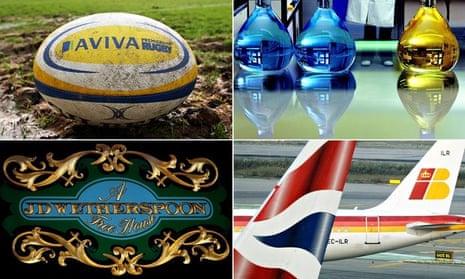The word “volatile” could have been coined to describe the stock market in 2014. Early in the year we were dusting off the record books as the FTSE 100 – supported by central banks keeping the money taps turned on to boost flagging economies – came within 52 points of the peak achieved in December 1999 at the time of the dotcom boom.
But the London index, weighed down as it is with commodity companies dependent on global growth and energy companies affected by the oil price, never did hit that peak as fears of a slowdown grew during the year. The strength of sterling hitting companies’ overseas earnings was another factor holding it back.
Other markets with more varied constituents – notably America’s S&P 500 and Germany’s Dax – continued to set new records and defy bad news. Even so, as the year progressed, that bad news seemed to mount up. Central banks started cutting back their support – entirely in the case of the US Federal Reserve’s bond buying programme – and talk of interest rate rises began to be heard. On top of that, there were doubts over the Chinese economy, the eurozone crisis re-emerged with political upheaval in Greece, while investors also had to contend with a plunge in the oil price and a rouble crisis in Russia, all of which combined to send UK shares to new lows for the year in December.
With a late, albeit unconvincing, Christmas rally, the FTSE 100 closed at 6566.09, still down 2.7% on the year, its first annual loss since 2011. And for the first time since 2002, the index failed to gain ground during December.
So what of our tips for 2014? With the FTSE 100 in decline, we managed a very creditable 2.3% gain on the year.
It was the US that really did us proud, with Apple and the US medical equipment firm Stryker striding ahead and outperforming even a buoyant Dow Jones industrial average and S&P 500.
America was also helpful for another good performer, the building materials group Wolseley, which does a large chunk of its business across the Atlantic.
Budget airline Flybe had a late run, benefiting from cheaper fuel costs in the wake of the oil price decline, while the recruitment group Hays did well in its key areas of Britain, Australia and Germany.
But there were some less successful picks, notably Salamander Energy which fell back after disappointing exploration results in south-east Asia. This left it open to an opportunistic low priced bid, which Ophir Energy seems to have won after Spanish rival Cepsa pulled out of the running.
Sportech was also a bad bet, which fell foul of a poor performance in its US racing business and a ruling it had to repay £93m to HMRC relating to a VAT dispute on Spot the Ball games. It plans to appeal.
As a reminder, the 12-month period we use for these tips is an arbitrary time period for tracking a share price. In the real world, investors would be likely to cash in any gains – or take any losses – at different times of the year, rather than wait until 31 December. With that in mind, here are our picks for 2015, which range from FTSE 100 stalwarts to a few lesser known businesses with growth potential.
Simon Goodley
City analysts spend all year feeding numbers into spreadsheets and routinely fail to outperform the market. So, if all that effort struggles to unearth winners, maybe humble retail investors are better served trying a different approach. On that basis, the pub group JD Wetherspoon, now 820p, might get the nod in 2015. Not on the basis of a rigorous analysis of its business – although it plans 200 new pubs including an ambitious expansion in Ireland – but purely as a punt on its chairman and founder, Tim Martin. He knows the trade backwards and, more pleasingly, he can’t stand financiers (the feeling is mutual). That doesn’t mean the shares will go up every year, but simply backing Martin probably gives you as good a chance of a profit as siding with the pros.
Juliette Garside
CityFibre listed on Aim in January 2014. The pint-sized infrastructure company has a big ambition: building fibre optics into commercial and residential areas underserved by BT’s superfast network. It also has big allies – Sky and TalkTalk are funding fibre to the home pilot in York. If it proves economical, the plan is to extend the scheme to Britain’s 50 or so second-tier cities. With Vodafone waiting in the wings to join the scheme, CityFibre could be heading for rapid expansion. The shares, listed at 60p, have risen to more than 80p, so the current 63p price is a buying opportunity.
Sean Farrell
B&M European’s shares haven’t caught fire since July’s flotation and sit at 285p. But 2015 could be the year the discount general retailer demonstrates its worth. Like Aldi and Lidl, B&M has gained from squeezed household budgets and the rise of bargain hunting. The Liverpool-based group has about 400 stores but hardly any in the south of England. It has ambitious plans to put that right through a new store programme that is ahead of schedule. B&M, chaired by former Tesco boss Sir Terry Leahy, is also expanding in Germany, home to some of Europe’s most frugal shoppers.
Terry Macalister
Anyone looking for an investment with a clear conscience could support the appropriately-named Good Energy. The Wiltshire-based firm, which generates all its electricity from renewables, has seen a surge in retail customers who have been leaving the big six suppliers. Good Energy profits more than doubled last year and yet the business remains relatively small with plenty of scope for growth. The share price doubled in value in 2103 but has tumbled since, alongside falling oil and other energy prices. At their current level of 211p there should be scope for a rebound.
Julia Kollewe
AstraZeneca has had an exciting year: the UK pharmaceutical firm successfully fought off Pfizer’s advances in May and spent the rest of the year under the shadow of a potential new bid, which never materialised. AstraZeneca boss Pascal Soriot trumpeted the company’s drug pipeline and was able to boast of some early successes. While his long-term goals look ambitious, the firm “looks completely different than two years ago”, according to Morgan Stanley. Some of this is already in the share price, now 4555.5p, but we reckon the stock has further to go.
Gwyn Topham
How much higher can airlines’ stock climb? EasyJet, Ryanair and International Consolidated Airlines Group (IAG), the parent company of British Airways, are trading at two or three times their value from two years ago. All will be further boosted by the sudden drop in fuel prices, the biggest fixed cost that has cut margins in the last few years. While investors show signs of believing easyJet’s price has peaked, IAG, at 486.1p, could still go up. The apparent newfound stability at Iberia, steady profits at BA, the addition of Vueling – as well as the potential acquisition of Aer Lingus to secure more lucrative transatlantic business – give the group a solid look and have quietened for now the sceptics of the consolidation strategy.
Zoe Wood
AO World arrived on the stock exchange with a bang in February. But that first day pop, when the shares rocketed 45% above its 285p debut, was shortlived and the stock now treads water below the float price at 280.2p. The air may have leaked out of internet stocks but ao.com still offers a slice of some interesting retail action. It has slick logistics and the scope to expand from its mainstay of white goods into TVs and beyond. It also has ambition by the truckload thanks to driven founder John Roberts with the recent push into Germany appearing well thought through.
Sarah Butler
The hot summer was a boon for fashion retailers but they have suffered as the balmy temperatures continued into the autumn and winter, hitting sales in a much more significant trading period. With that in mind, tipping a fashion retailer may seem unwise. Discounts on coats and knitwear are everywhere and few will escape unscathed. But Boohoo, which joined the junior Aim market this summer, has all the hallmarks of a business which can outshine its peers.
Boohoo is a fairly young business with plenty of opportunity to expand in the UK, as well as abroad. The share price has suffered by association with online fashion store Asos, which has suffered from an array of problems, some of which were self-generated. Boohoo will have to deal with the impact of the rising value of the pound on its overseas business, but its shares are still loitering well below its float price at 39.5p. That seems like an oversight as we head towards potentially easier times for UK consumers.
Jill Treanor
Aviva had a rocky end to 2014. It secured a deal which made it the biggest insurance, savings and asset management company in Britain by buying Friends Life but in the process dented its own stock market value, with its shares now at 484.5p. There are lots of reasons to be cautious about the share market in 2015; the general election leaves many sectors vulnerable. George Osborne sent shockwaves through the insurance sector in 2014 with plans to overhaul the pensions market and no longer make it compulsory to buy an annuity.
With the proviso that the insurance market could again become the focus for politicians, Aviva may recover lost ground if investors conclude that the Friends deal is not as awful as it first appeared and have confidence that the enlarged insurer will be able ratchet up its dividend payouts.
Nick Fletcher
Software Radio Technology supplies technology and products to track marine vessels around the globe, using the International Marine Organisation’s AIS standard. It has about 95% of this market, and part of its growth has come from governments mandating ship owners to use tracking equipment.
A key market will be the US, and the country’s coastguard is due to publish a final ruling on using AIS in January, which means more than 40,000 boats would be required to install new equipment within a few months. This could be worth $35m (£23m) in revenues to a business that has annual sales of around £6m. With other projects under way, including tracking national fishing fleets in Malaysia and India and further out, Russia and South America, SRT should see a less lumpy ordering pattern in future.
The shares at 30.87p have shown a recent rise in anticipation of the US ruling, but could have further to go.









Comments (…)
Sign in or create your Guardian account to join the discussion